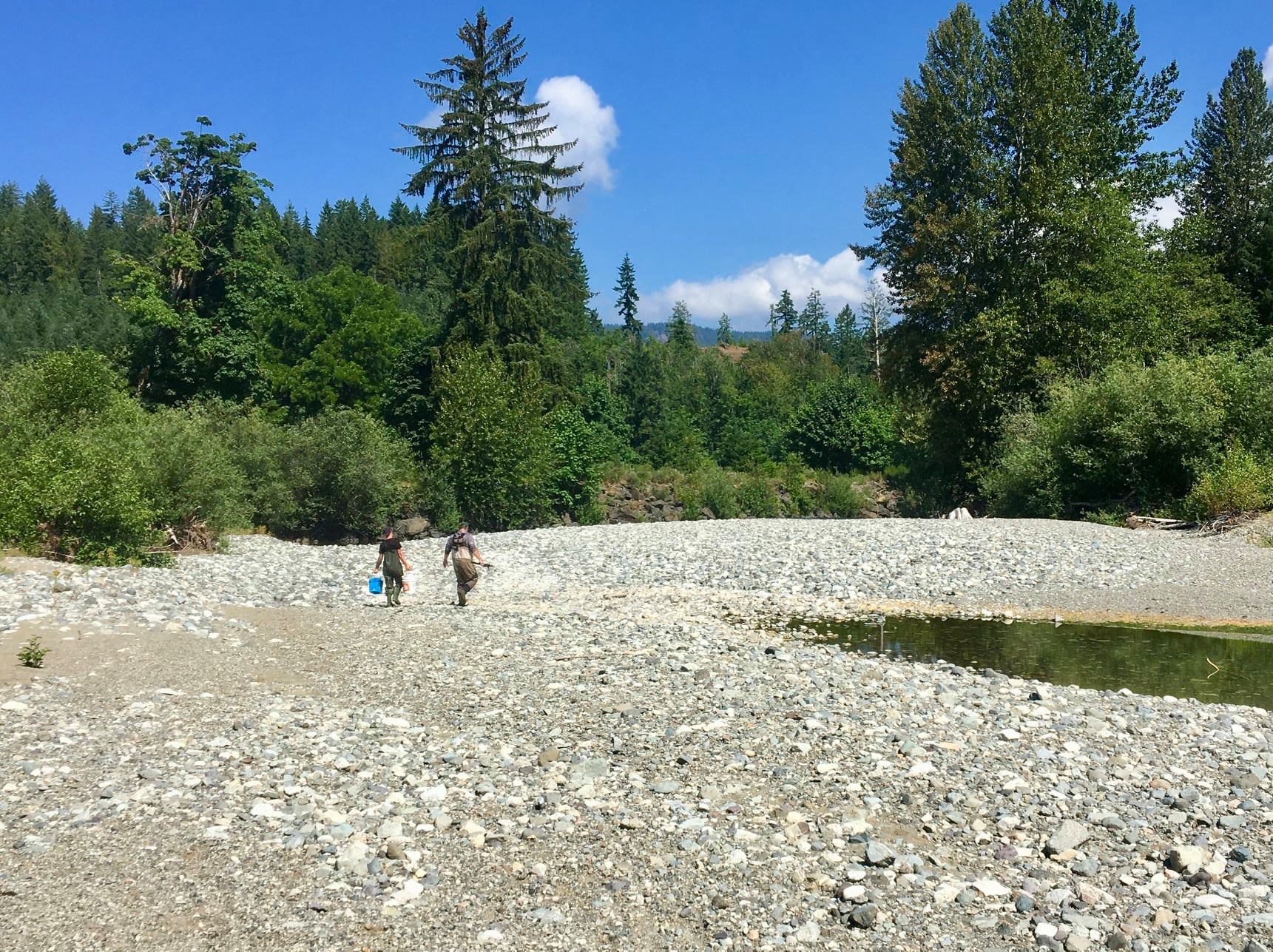The hot weather has the water temperature in the Cowichan River now at a level that is not normally experienced until late summer.
On Monday, the temperature of the river in Duncan reached 23.6 degrees Celsius, and as of at 4 pm Tuesday afternoon it had edged above 24 degrees.
The water temperatures were recorded by an Environment Canada monitoring station in Duncan.
Wilf Luedke, Area Chief of the South Coast Stock Assessment Division of Fisheries and Oceans Canada, says high temperatures can be harmful to juvenile salmon in the river.
He says for young salmon, 16-18 degrees is about the maximum acceptable range.
Luedke says “there is a lot of information from different places, where once you hit 17-18 degrees, growth of salmon fry will be impaired,” as well as their ability to smolt in preparation for life in salt water.
While he won’t attempt to estimate the impact on young salmon, he expects there will be higher mortality rates.
“Like the rest of us, when it gets hot they become more lethargic, so are unable to avoid predators the same way, or eat things, so mortality will be up for sure when it’s 16 to 20 degrees.”
He does say the Cowichan River has places that provide a refuge where the young fish may be able to find cooler water, or they may move into Cowichan Lake.
Luedke says salmon can seek out cooler water in tributaries or in the estuary and some may have left the river system early.
He says Chum are usually out of the system in April and Chinook are usually gone in July, but Coho and Steelhead are still in the river and will be more vulnerable to higher water temperatures.
Leudke says the warmer water temperature has the potential to increase in the amount insect prey for the salmon fry to feed on, which may have increased the rate of growth.
Tom Rutherford, the chair of the Cowichan Watershed Board, says the river doesn’t usually reach such high temperatures until late in the summer. He calls it shocking, but not totally unexpected in light of the recent heatwave.
He says the young salmon are able to find refuge in places where cooler groundwater seeps into the river, or where groundwater fed tributaries join the river.
“That groundwater is generally substantially cooler, down into the mid teens,” and juvenile salmon and adult trout tend to congregate in these spots.
Rutherford says these places are especially valuable, “and we should be particularly careful in protecting them.”
Rutherford says paying attention to the riparian zones on either side of the river and its tributaries contributes to keeping the water temperature lower and providing areas where fish can cool down.
One of the most serious perils faced by young salmon is lower water levels in summer that result in the side channels of the river becoming isolated pools.
Volunteers from the Cowichan Lake and River Stewardship Society have been busy in the last few days relocating salmon fry from the side pools that are drying up and into the main channel of the river.
According to Rutherford, the significant snowpack this year has helped maintain the water level and flow in the river at about seven cubic metres per second, which is where the river should be at this time.
The Cowichan River is an important salmon spawning river on Vancouver Island and was designated as a Canadian Heritage River in 2003.
It is also considered to be one of the finest trout fishing streams in British Columbia.






